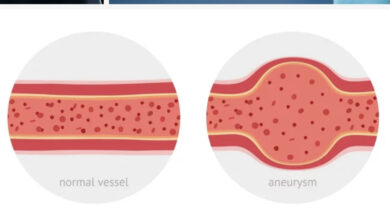OCULAR MIGRAINE, OPTIC MIGRAINE, RETINAL MIGRAINE, VISUAL MIGRAINE, SCINTILATING SCOTOMA

The terms in the title of this blog are all used to describe the same phenomenon. As if medical terminology weren’t challenging enough, five names for the same thing is real confusing. But disorders are often described by several scientists, each of whom sees a different nuance and decides to name it himself. Even though each of these conditions differ slightly, they all involve a disturbance of a patient’s vision called an Aura, or Scotoma.
In each of the above disorders, patients describe the visual abnormalities (aura) in different ways. They can be blind spots obstructing part or all of the vision, floaters moving in the field of vision, jagged lines, flashing or flickering lights, a crescent-shaped white or black figure, and blurred images in one or both eyes. They persist whether your eyes are open or closed. The first time it happens, it scares you to death, and you think you’re having a stroke! I certainly did! Your mind conjures up all sorts of morbid theories and anxieties about what is happening.
This visual phenomenon lasts anywhere from a few minutes to an hour. It is caused by abnormal neurologic signals between the brain and the eyes, but exactly why and how is unknown. One theory is a spasm occurs in the artery to the retina affecting blood circulation to the eye resulting in what the patient sees. Another theory is termed “spreading depression of the cerebral cortex” similar to what occurs prior to a migraine headache. Suffice it to say the exact cause is still a mystery.
Consistent among all patients who experience an aura is a strong family history. One source quoted a frequency of 70% positive family history for aura, but my experience says it’s much higher. Also, women have aura with or without headache more often than men probably as a result of the female hormonal make-up.
There are several triggers, or external factors, involved in causing these phenomena. Those include emotional stress, hormonal contraceptive pills, high blood pressure, exercise, dehydration, smoking, hyperthermia, low blood sugar, and exposure to high altitude. But sometimes they occur with no recognizable trigger. They just happen.
From this point on begins a discussion of semantics. Each of the conditions in the title of this blog differs very slightly from the others, and those differences will be explained.
We can divide visual aura, or Scotoma, into two subcategories. In the context of visual disturbances of the type mentioned above, we must first accept that aura and scintillating scotoma are one and the same. Other types of auras exist (auditory, tactile, olfactory, etc.), but here we’re speaking of visual auras only; ie. visual disturbances. The subcategories are:
1. Ocular Migraine, Optic Migraine, Retinal Migraine—all are names for the same thing. Scotoma occur in one eye only, are temporary lasting less than 60 minutes, have a strong family tendency, and may or may not be followed by a headache. Visual disturbance vary from flashes of light to total visual loss in the affected eye. If a headache follows the scotoma, the disorder becomes called a Classic Migraine, or Migraine with Aura.
2. Visual Migraine involves Scotoma that occur in both eyes at the same time. Typically, the disturbances in Visual Migraine last less than 30 minutes, are identical to other scotoma, but if you cover one eye at a time, will be present in both eyes. I said this is a matter of semantics because the only difference in ocular and visual migraine is the presence of an aura in one eye or both! In both, scotoma are the major symptom.
The triggers mentioned above are present in both categories. Certain foods (aged cheese, smoked meats, red wine), caffeine (drinks, chocolate, analgesics), artificial sweeteners, processed food additives (MSG), cigarette smoke, perfume, sleep deprivation, and bright or flickering lights are the most common offenders.
The best treatment is prevention—avoiding the personal triggers you indentify. Scotoma are scary. When they are present, it’s hard to drive a car, read a book, or watch TV. If you’re a migraine headache sufferer, they signal the impending onset of a horrible headache. A headache that if left untreated can last several days, cause you to miss work, or miss family activities.
None of the sources I read for this blog spoke of tragic consequences that result from visual aura. The standard presence of scotoma, as unusual and scary as it can be, does not portend serious illness; UNLESS, there are neurologic symptoms that also occur. Symptoms like slurred speech, trouble walking, clumsiness of the extremities, or vision loss that lasts longer than 60 minutes should prompt an immediate visit to your doctor, the ER, or a neurologist. A thorough neurologic work up is in order to search for a correctable cause. If vision loss in one eye persists, it’s imperative to look for other causes—optic neuritis, retinal artery occlusion, blood clots from the heart, etc.
As frightening as visual aura/scotoma can be, it is reassuring to know they are not a precursor to disaster. The first time I had it, though, it upset me enough to call a neurologist colleague who was very reassuring. He was right. I’ve had scotoma at least 3 more times, each accompanied by anxiety, but resolving within an hour without residual. When children or adolescents develop aura, which does happen, you hope and pray they’re not heading for a life of migraine headaches. That is a genuine concern.
Visual auras probably happen a lot more often than gets reported. The symptoms may last a minute or two, go away, the patient breathes a sigh of relief and doesn’t mention it to anyone. So an episode occurs unreported. For prevention, it helps to avoid the triggers. I think if every time I drank too many cups of coffee I got a headache, I would quit coffee or drink decaf.
Major Points To Remember: The differentiating factors for Auras are:
Does it involve one eye or both?
Is it followed by a one-sided, pounding, throbbing headache?
Involvement in One eye means it’s “Ocular (Retinal) Migraine”
Involvement in Both eyes means it’s “Visual Migraine”
If it’s followed by a headache, it’s a “Classic Migraine” or “Migraine with Aura”
If there are No Neurologic Symptoms it’s a benign visual aura or “Scintillating Scotoma”
The doctor musn’t forget to examine his/her patient. With those symptoms, something of concern just might be found.
References: https://www.healthline.com/health/scintillating-scotoma




